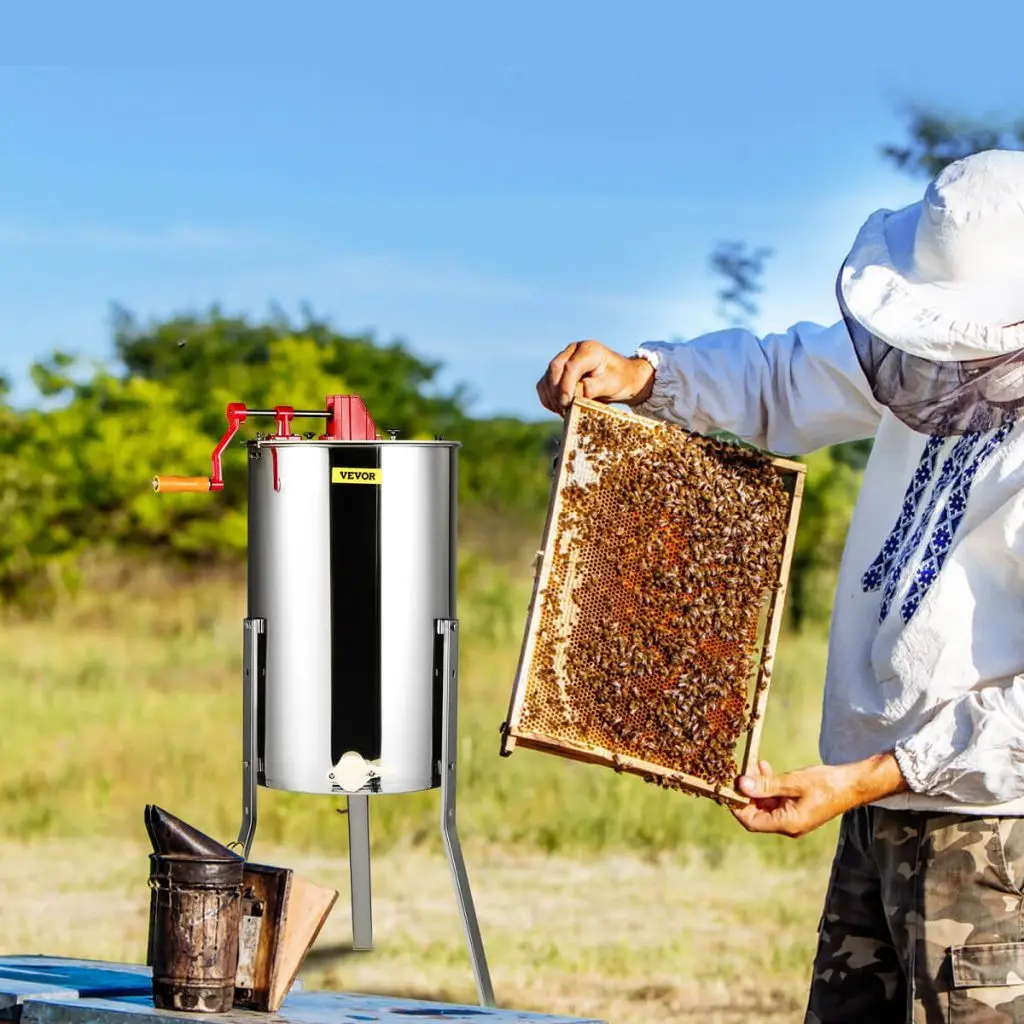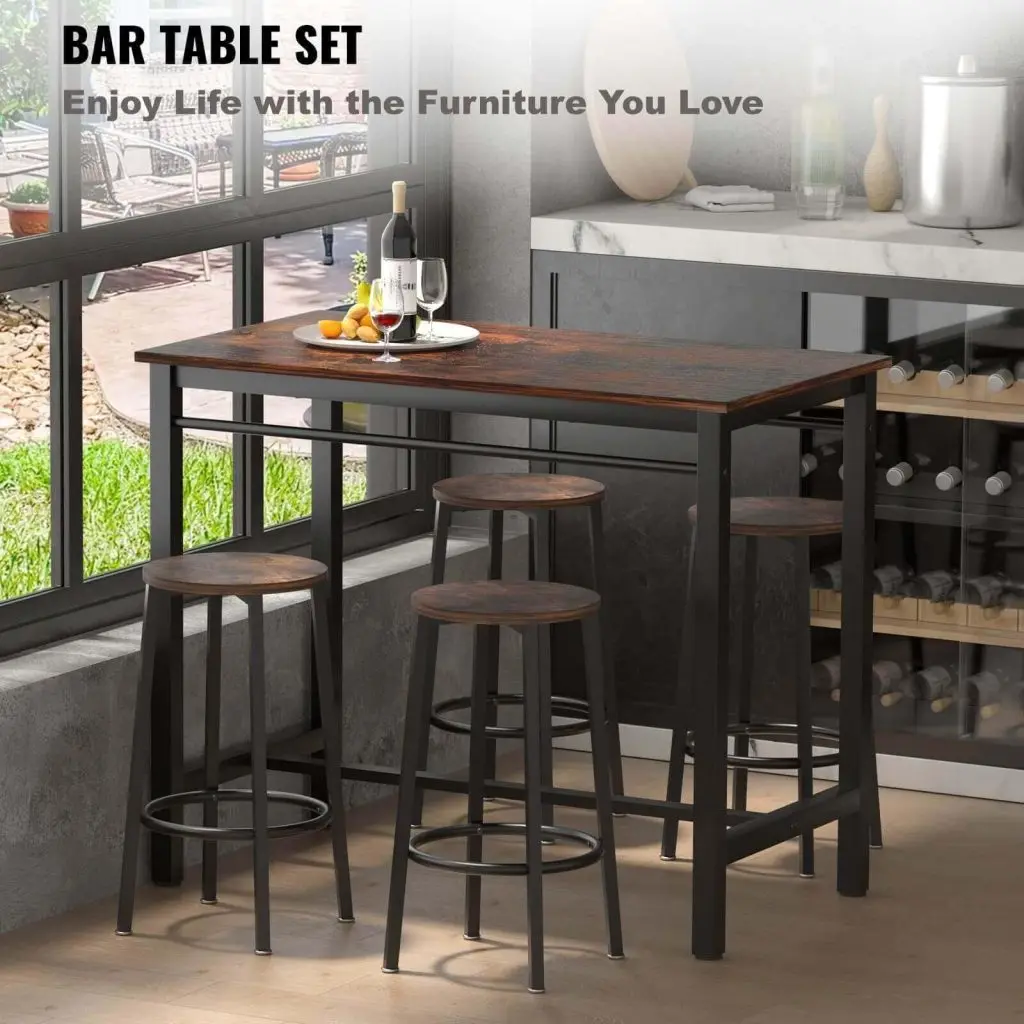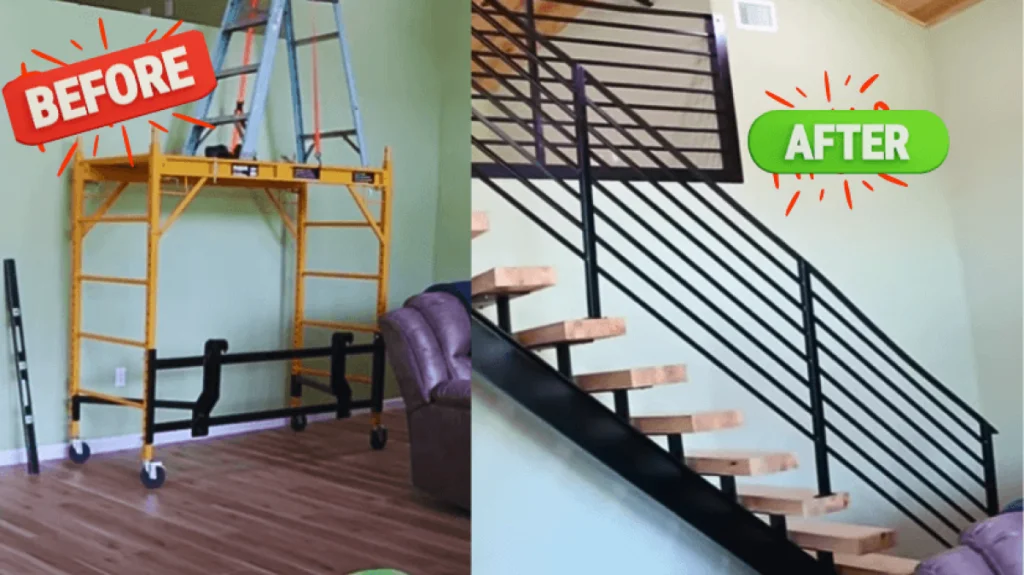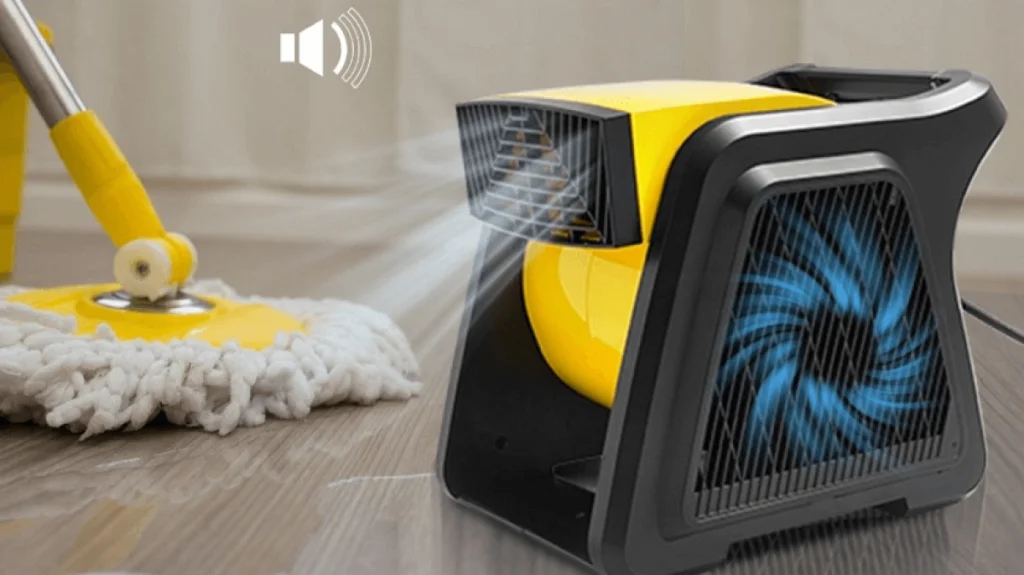It is normal if beekeeping feels a bit overwhelming. As a beekeeper, you do not only worry about beehive maintenance and keeping your bees healthy, you also have to make sure that the extraction process is without any hitches or discomfort to the bees (and you).
Sadly, honey extraction can easily become a messy and time-consuming business if enough care isn’t taken. That is, it can become so dreadful that it makes you question the process altogether: having sticky honey dripping everywhere, frames getting damaged, and all those. Thankfully, the right honey extractor from trusted brands like VEVOR can make all the difference.
Whether you’re a professional who dreads honey extraction or you’re a curious newbie starting off bubbly and filled with optimism, our Honey Extractor 101 will guide you in making the best out of your endeavor. So, let’s get started.
Table of contents
What is a Honey Extractor?
A honey extractor, which can also be called a honey bee extractor, is a tool used in beekeeping to, as the name suggests, remove honey from their combs without damaging the comb structure or startling your bees.
Honey extractors use the principle of centrifugal force by spinning honeycombs to extract the sweet bee nectar out of the cells which flows to the bottom and is collected by the extractor for harvesting. Honey extractors come in various types, including manual and electric models.
For both hobbyist beekeepers and professionals, a honey extractor helps you avoid the stress and potentially unhygienic process of extracting honey by hand or any other method.
Types of Honey Extractors: Which One is Right for You?
Picking the right honey extractor depends on your priorities as a beekeeper, and this can be influenced by the scale of your operation and your budget.
When talking about the types of extractor honey, there are two main types: tangential and radial. Additionally, there are specialized models like portable and 2-in-1 extractors for beekeepers who need a more adaptable setup.
Tangential Honey Extractors
Tangential honey extractors were primarily designed for hobbyists, but gradually became the universal extraction process.
During honey extraction, the frame is positioned next to the drum so that the honey can drain easily. This means that the frames are positioned so that only one side of the honeycomb is spun at a time. Once the honey on that side is removed, the frame must be turned manually to extract honey from the other side.
Tangential honey extractors are perfect for small-scale or beginner beekeepers who may only have a few hives. It’s often more affordable than radial extractors and simpler to operate, making it a great starting point for those new to beekeeping.
Radial Honey Extractors
Unlike tangential honey extractors, radial honey extractors allow dual-side extraction. This means that with a radial honey extractor, honey can be spun out from both sides of the comb simultaneously without needing to flip the frames.
In this design, the frames are arranged like spokes on a wheel which allows honey to flow out more efficiently through centrifugal force. This type is suitable for medium to large-scale beekeepers who manage multiple hives and need a faster and more efficient extraction process. Although radial extractors tend to be more costly, they save considerable time and labor.
Other Models (e.g., Portable and 2-in-1)
For beekeepers who want additional flexibility, specialized models like portable and 2-in-1 extractors are great choices.
Portable honey extractors are lightweight and easy to transport which makes them perfect for beekeepers who need to move their equipment between different locations.
2-in-1 models, on the other hand, combine the functionalities of tangential and radial extractors hence giving users the option to switch between single-side and dual-side extraction as needed.
Key Features to Consider When Choosing a Honey Extractor
Selecting the right honey extractor requires careful consideration of its features to match your beekeeping needs. Here are features to consider before making a decision.
Capacity and Frame Compatibility
The capacity of an extractor honey bee is one of the first things to consider, as it determines how many frames can be processed at once. Extractors come in various sizes, from smaller 2-frame models to larger 4, 8, or even 12-frame capacities.
For hobbyists or those with a few hives, a 2- or 4-frame extractor is often sufficient. However, if you manage a larger operation, an 8-frame or higher capacity may better suit your needs, as it allows you to extract honey from more frames at once, saving time and labor.
Frame compatibility is another factor to consider because honey frames come in different sizes—shallow, medium, and deep. It’s important to make sure the extractor you choose can accommodate the frame size(s) you use.
Manual vs. Electric
Honey extractors are available in both manual and electric versions.
Manual extractors require hand-cranking to generate centrifugal force, which can be time-consuming. On the other hand, it gives you control over the speed of extraction. When you buy a manual extractor from trusted brands like VEVOR, you can expect it to come with the capacity to hold up to 2 deep frames and 2 medium or shallow frames. The VEVOR model also has a rust-resistant design and adjustable extractor height for stability and comfort.
Electric extractors use a motor to power the spinning hence speeding up the extraction process. They are ideal for larger beekeeping setups, as they require less physical effort and are more time-efficient. Excellent electric extractors like the VEVOR model typically hold up to 4 deep frames and 4 medium or shallow frames and typically feature an adjustable speed of up to 1300 rpm.
Recommended For Your Project
Material Quality
Material quality is important for durability and honey purity. Stainless steel is the preferred choice for honey extractors, as it is food-grade, rust-resistant, and easy to clean. Stainless steel extractors are known for their durability, and hygiene.
They can stand up well to repeated use, unlike plastic models that may absorb odors, stain, or wear out quickly. Opting for stainless steel ensures your honey remains contaminant-free, and the extractor will last for many seasons of harvesting.
Design and Stability
A well-designed honey extractor can make a world of difference in efficiency and ease of use. Features such as clear lids allow you to monitor the extraction process without opening the machine, which can help prevent spills and honey wastage. Reinforced stands are also beneficial for stability during high-speed spinning, reducing vibrations and keeping the extractor steady, especially in electric models.
Ease of Cleaning and Maintenance
Since honey extractors can get sticky quickly, ease of cleaning is something you should be on the lookout for.
Look for extractors that are easy to disassemble for thorough cleaning. You should also go for one with smooth surfaces to prevent honey residue buildup. Stainless steel extractors can be cleaned effectively with warm water and mild soap, and they are generally more resilient to repeated washing than plastic.
Why Choose VEVOR’s Honey Extractor?
VEVOR’s extractor honey machines (manual and electric) are designed with beekeepers’ needs in mind. This means that they combine durability, functionality, and affordability. This section details why they are a trusted choice for hobbyists and professionals alike.
Durable Construction and Outdoor Compatibility
VEVOR’s honey extractors are made from food-grade stainless steel, providing superior hygiene and resistance to rust or corrosion, even in outdoor conditions. This durable construction means VEVOR extractors can withstand frequent use and exposure to different environments, ensuring long-lasting performance. The stainless steel material also guarantees that your honey stays pure, preserving its natural flavor and quality.

User-Friendly Features
VEVOR offers several user-friendly features that make honey extraction smoother and more efficient. Electric models include powerful motors for faster, automated spinning, while manual options are equipped with ergonomic handles for easier hand-cranking. Assembly is straightforward which means beekeepers can set up and start using the extractor with minimal effort.
Affordable and Reliable
One of VEVOR’s standout advantages is its cost-effective pricing, making high-quality honey extractors accessible for beekeepers at all levels. VEVOR combines affordability with reliable performance to provide extractors that are built to last without breaking the bank.
FAQs About Honey Extractors
As we wrap up this guide, here are a few frequently asked questions about honey extractors and their answers.
Can I Harvest Honey Without an Extractor?
Yes, it’s possible to harvest honey without an extractor, using methods like crushing and straining. However, these methods can be labor-intensive and may waste honey by damaging combs. An extractor is a worthwhile investment for efficient, clean honey extraction. It also helps maintain combs for reuse making it more sustainable and cost-effective for beekeepers in the long run.
Which Type of Extractor is Best for Beginners?
For first-time beekeepers, manual extractors are affordable and easy to use. Two-frame or four-frame extractors offer a good balance of capacity and simplicity. Look for models from reliable brands like VEVOR that offer durable stainless steel construction for longevity.
How Often Should You Clean Your Extractor?
Cleaning after each harvest is crucial to maintain hygiene and prevent honey buildup that could cause contamination. Regular maintenance keeps the extractor in top shape and prolongs its lifespan.
Conclusion: Find the Perfect Honey Extractor for Your Needs
Investing in a quality honey extractor simplifies harvesting, increases efficiency, and ensures cleaner honey production. For both beginners and experienced beekeepers, the right extractor can save time, reduce honey waste, and help reuse combs.
For the best experience, check out VEVOR’s honey extractors to invest in an option suited to your beekeeping needs and enjoy high-quality honey production.





